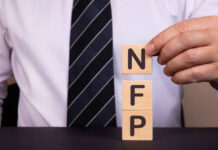Markets
Headlines this morning that Russian shelling caused a fire at the territory of a major Ukraine nuclear power plant was the trigger for an outright risk-off session, especially on European markets. In volatile trading, European indices currently are mostly losing between 3.0% and almost 5.0%! Commodities continue their ascent. Even so, Brent oil ($ 114 p/b), while still sharply higher in a weekly perspective, is trading off yesterday’s peak levels near $120. Evidently this didn’t give any comfort. German bunds are again attracting a strong safe haven bid, yields declining between 13.5 bps (2-y) and 10 bps (10-y). The Germany real yield dropped to an all-time low as inflation expectations continue to set new cycle peaks. EMU swaps are ceding between 4 bps and 7.0 bps. Contrary to what temporarily occurred at the start of the week, the decline in core yields doesn’t help peripheral bonds. 10-y EMU spreads versus Germany are widening up to 7-8 bps (Greece/Italy). The US yield curve also developed a defensive bull flattening with yields declining between 7.75 bps (2-y) and 11 bps (10-y). US February payrolls (cf infra) again printed strong, confirming that the US economy is ready for the Fed taking back policy stimulus. However, the report hardly left any traces on the US bond market. Losses of US equities are more modest compared to Europe with indices declining about 1.25%.
On the FX market, the euro is rolling over into some kind of free-fall. After breaking the EUR/USD 1.10 barrier this morning, the pair already filled bids below 1.09 this afternoon. Similar picture in most other major euro cross rates. EUR/CHF at 1.0035 is coming very close to the symbolic parity level. Sterling, which usually is also quite sensitive to a risk-off sentiment, also strongly outperforms the single currency with EUR/GBP (0.8255) breaking the key end 2019 December low of 0.8277. EUR/JPY also fell off a cliff (125.85). However, yen gains against the dollar remain modest (USD/JPY 115.25). The dollar remains in pole position with DXY jumping from the 98.00 area to currently 98.70.
CE markets/currencies are facing heavy fallout from the war in Ukraine. Central banks are stepping up their defense to a avoid that sharp currency deprecation would exacerbate an already sky-high inflation being reinforced by overheated commodity/import prices. Yesterday, the Hungarian central bank sharply raised the weekly deposit rate from 4.60% to 5.35% in an attempt to slow the free-fall of the forint. For now with little success. EUR/HUF today touched a new all-time high near 391.75 (currently 385). The National Bank of Poland over the previous two days and today did FX currency interventions to support the zloty. The NBP defense yielded no obvious result either, except probably that it avoided even bigger damage. After a brief pause, EUR/PLN already touched a new multi-year top currently trading near 4.86. The Czech national bank(CNB) today joined the NBP as it reported buying koruna in the market. This is a logical step as the CNB has ample FX reserves. The krona also lost part of the post-interventions gains, but EUR/CZK currency holds more or less stable compared to yesterday (currently 25.76 area).
News Headlines
US payrolls are symbolically downgraded to the headlines section this month as they – for once – were of secondary importance for markets. Job creation in the US surprised to the upside. 678k jobs were added in February vs 423k expected and come on top of an upwardly revised 481k in January. The bulk was created in the services sector with leisure & hospitality (+179k), education & health (112k) and trade & transport (103k) accounting for about 60% of the gains. The goods-producing sector was also on fire, adding 105k jobs. There’s now just over 2 mln people less at work compared to before pandemic. The unemployment rate ticked lower to 3.8% from 4% while the participation rate unexpectedly rose from 62.2% to 62.3% – a new post-pandemic high and a sign more people moved off the sidelines. Wage growth is the odd one out this month. Year-on-year wages still rose 5.1% but there was no increase on a monthly basis. Some pointed out the big influx of workers in low-wage sectors this month, depressing the mean/median figure. The market reaction stayed muted with US bond yields sticking to earlier losses across the curve. EUR/USD tested the 1.09 big figure on sustained euro weakness.













